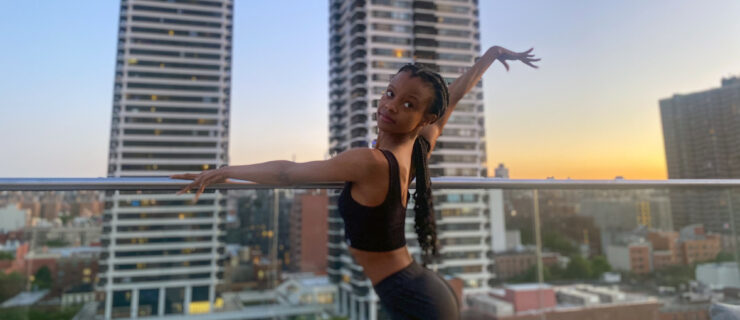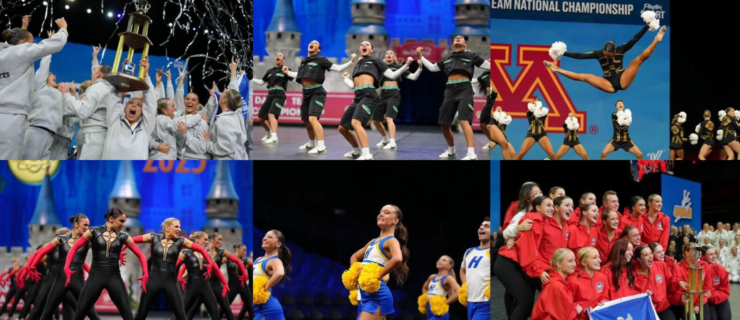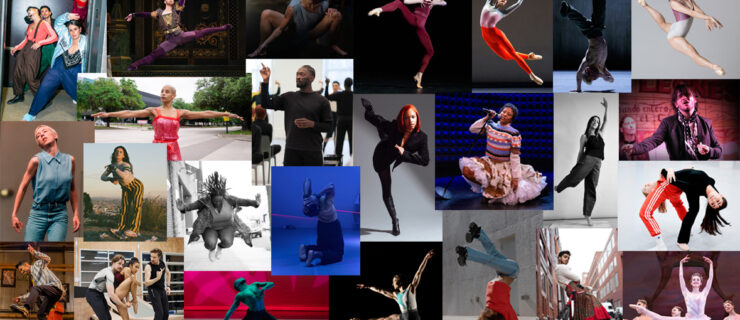The Reel Deal: Dance on Camera
Dance on camera is nothing new—just ask Fred and Ginger, Travolta, or Baby and Johnny. Yet never before have there been so many ways for dancers to showcase their creativity via film and video. Online video sites make it super easy to share your work with the world, with numerous dance-only destinations having recently popped up in the same vein. (Case in point: DS’ very own DanceMedia.com!) No longer is pricey equipment needed; making a movie is now as simple as propping up your MacBook, using your cell or digital camera or borrowing your older bro’s handheld camcorder.
So now that we have all this rockin’ technology, what’s a dancer to do with it? The possibilities are endless—and exciting. Not only can film and video be a priceless tool for furthering your career, but they are also amazing mediums to attract new audiences to dance. To pinpoint the latest trends and innovative ideas, DS chatted with several dance dynamos who are making waves across the film spectrum.
The Long and Short of It: Dance Films
What do you get when you combine 20 tables, a large, empty warehouse and a dynamic group of modern dancers?: the award-winning One Flat Thing, Reproduced by renowned choreographer William Forsythe. One of four short-film honorees at this year’s Choreography Media Honors, Forsythe’s film brilliantly alternates between tight and aerial shots of dancers running, crawling, climbing and sliding on top of and between the rows of tables. The visual effects are simple yet powerful, as the camera angles enhance the piece by adding a dynamic three-dimensional feeling.
As pieces like One Flat Thing show, factors like overhead angles and carefully paced editing make the experience of watching choreography on film way different from live performance. Viewers truly see the piece through the eyes of the choreographer, which equals new creative freedoms. “Filmed dance brings the work outside concert halls and expands the ability to project what you communicate from 360 degrees rather than just the proscenium space,” says Michelle Mola, a 2007 Juilliard graduate and the 2008 recipient of the Susan Braun Award from Dance Films Association. “It’s a world I would never have access to without a camera.”
Some choreographers even stage shots as an equal ballroom-style partnership. “The camera can actually become a dancer; movie director Baz Luhrmann is a prime example of this approach,” says “So You Think You Can Dance” director Matthew Diamond, giving props to Luhrmann flicks like Moulin Rouge! and Strictly Ballroom. Michelle also uses this technique, often putting the camera in dancers’ hands or directing camera operators to mirror dance using complex camera movements. “I really consider the relationship that exists between the camera and the subject,” says Michelle, who is using her award grant to create a series of short films.
Another of Michelle’s filmmaking techniques is to avoid quick-cutting MTV-style editing and let the movement speak for itself. In her award-winning submission, Michelle sent in one long, continuous shot of a dance sequence. “Most music videos are chopped up so fast that it really irks me,” says Michelle. “I watch dancers working so hard, and yet, I feel nothing. My work poses the question, ‘Why not let simplicity of human expression resonate?’ I like to let the movement go as long as possible.”
From the Outside In: Documentaries
Along with short and feature-length films, dance documentaries are also on the rise. Not only do these films show amazing dance footage, but they shed light on the hard work and personal lives of the dancers, as well. Plus, documentaries provide an in-depth look inside the culture of a particular genre, as is the case of Inside the Circle, which explores the world of B-boys and rival dance crews.
Filmmaker Marcy Garriott was inspired to make Inside the Circle after attending a BBoy City event in 2002. “When the dance battles started unfolding that night, I was riveted by their intensity,” remembers Marcy. “Not only was the dancing itself dynamic and beautiful, but it was clear that the B-boys were bringing their lives into it; you could see humor, joy, anger, a full expression of emotions. I immediately felt that I wanted to delve deeper to understand those lives and how they were being expressed through dance.”
When choosing the film’s scenes and “stars,” Marcy says she relied on three criteria: strong visuals, compelling personal stories that reflected larger issues affecting society, and dancers who were open to being filmed and brought a unique energy to the screen. The film took years to make as Marcy and her crew followed the documentary subjects from battle to battle.
After filming wrapped, Inside the Circle made the rounds on the festival circuit—where it won Audience Awards at the 2007 South by Southwest and the San Diego Film Festivals. While promoting the film, Marcy was happy to learn that such projects are becoming more prevalent: “As we toured different film festivals, we learned of many B-boys and B-girls with documentary films underway. These upcoming films will bring the world of B-boying to a larger audience in a refreshingly authentic way, rather than Hollywood’s artificial interpretation of the culture.”
Got It Goin’ Online: Dance Websites
Of course, dance movies and documentaries aren’t the only way to get your dancing seen. Sometimes it’s as simple as filming freestyle moves or showing off combos from class! Some sites allow dancers to upload their own videos, as well as make profiles, enter contests (like Dance Spirit’s Video of the Month), and interact with other dancers around the globe. Others also feature instructional videos by choreographers like Brian Friedman and Travis Wall. (Not only are the clips like personal one-on-ones with your fave master teachers, but you can also rewind/watch as many times as needed!)
Besides being a great way to get noticed and learn new moves, these websites also enable dancers to put on the director’s hat and tap into new areas of artistry. “There’s a lot of creativity coming onto the scene, and it’s a great outlet for dancers to showcase their stuff in a way they wouldn’t have been able to before,” says Michelle Latimer, owner of Michelle Latimer Dance Academy in Greenwood Village, CO. For some dancers, making dance videos could even lead to different kinds of job prospects down the road: “It’s a natural progression for choreographers to move into directing,” says choreographer Mia Michaels. (More from Mia in our “Lights, Camera, Make It Happen!” sidebar.)
And perhaps most relevant is the way dancers can use websites to spotlight their talent and book gigs. Instead of spending money on mailings, dancers can upload demo reels for choreographers and casting directors to view online. Though high production values and slick editing can definitely add value, choreographer Tony Testa says that video demos don’t always need to be professionally produced. For his first reel (which snagged him a gig with Janet Jackson!), Tony gathered a few dancers to perform several routines in front of a camera propped-up on a chair—no fancy editing, just straight-on dance footage. “I just let the camera shoot and show my choreography, and that’s the approach I would encourage,” says Testa.
Whether homemade or high-budget, online or onscreen, dance videos are no doubt a great way to keep dance in the spotlight.



